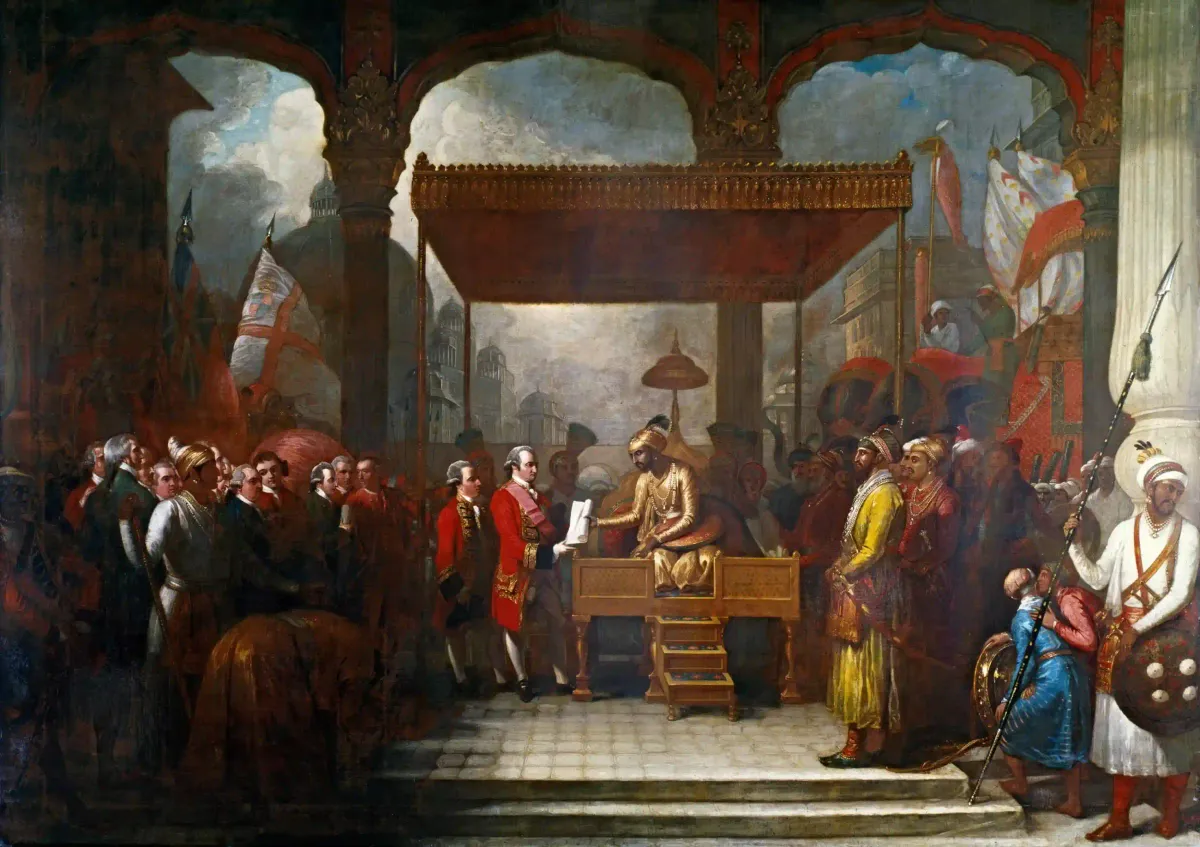The Forgotten Purpose of the Corporation: A Study in the East India Company
Corporations have been a key mechanism for humans to create wealth. Observing the East India Company, this article proposes that corporations serve two primary purposes: value creation and societal reciprocity – and that members of society have the right to demand the latter from firms.

The corporation is a historically recent invention, established as a legal entity that facilitates valuable activities. What is economically evident is the fact that corporations have been a key mechanism for humans to create wealth through the production and exchange of goods and services. This article proposes that there are two purposes of the corporation: value creation and societal reciprocity, both of which can be drawn from observing the operation of the British East India Company. For the purpose of this article, ‘India’ will be taken to include the regions formerly under the rule of the Mughal Empire.
The Inception of The British East India Company

The British East India Company (EIC) presents to us the politico-economic influence a multinational corporation can have. William Dalrymple describes the ascension of the EIC in his book, The Anarchy. Dalrymple states the EIC was initially formed by Thomas Smythe and his Levant Company. Smythe and his companions in the Levant Company observed the wealth that was being generated by the Dutch East India Company as they traded spices from Indonesia back to Europe. So, Smythe sought these same profits in the Far East. On 31st December 1600, the Company was formally established when it received a royal charter from Queen Elizabeth I. The main aim of this company was to trade gold and silver bullion with the East in return for fine cotton textiles, saltpetre, opium, and other materials.
The Corporate Purpose: Value Creation
The first purpose of the corporation that can be observed in the EIC is value creation, measured by the number of profits produced by the firm. In order to achieve the profit-making objective, in 1614, the main shareholders sent Sir Thomas Roe to speak with then-Emperor Jahangir of the Mughal Empire. After 3 years, Roe convinced the Emperor to establish an EIC factory in Surat. Thus began the interaction between political actors (the government) and economic actors (companies). It was not until the death of Emperor Aurangzeb in 1707 that the EIC progressed in attaining favourable contractual agreements through negotiations with regional rulers. The most significant of the contractual agreements was the Grant of Diwani (otherwise known as the Treaty of Allahabad) that gave the EIC financial authority over the regions of Bengal, Bihar and Orissa – regions which were, at the time, the most prosperous territories of what remained of the Mughal Empire.
The Corporate Purpose: Societal Reciprocity
An observation of the EIC’s operation in Bengal, Bihar and Oissar provides clarity as to what the second purpose of the corporation is: societal reciprocity. A corporate state (defined as any significantly large company) has the capacity to enhance or diminish the standard of living of the citizens in the society the company operates in, via its allocation of profits. The EIC streamlined their profits from India straight back to England, ultimately leading to a diminish in the standard of living of residents in Northeastern India.
The Bengal province had spells of drought that led to crop failure, and thus, naturally, short periods of famine occurred within the region. However, the crop failure of 1769 was accompanied by stringent taxation and bulk buying of grain by the EIC. This meant that significant grain reserves were willfully extracted by the EIC during a time of limited supply. The consequence for residents in the Bengal region of Ranjpur was an increase in death rates. 10 million people are said to have died during this period of famine. The opportunity cost for wider society was that the EIC revenues (ultimately exported as profits back to shareholders) could have been used to relieve the impacts of the famine. Thus we can observe that when a corporate state retains all of its profits it is either directly or indirectly affecting the lives of its workers.
The EIC exploited the agricultural economy of Northeastern India during the early to mid-19th century. The Company established a revenue collection system under the Permanent Settlement Act of 1793 that ensured two exploitative results. Firstly, a portion of land rent collected by zamindars (landowners) would be returned to Fort William at a predetermined rate. Secondly, the pressure placed on farmers to produce profitable crops forced a shift to the production of cash crops such as indigo and cotton. Despite the minority Indian zamindar class benefitting through the collection of rent as de facto landowners, the majority ryot class’ livelihoods were subsistent. Indigo farmers could not produce the quantity required by the Settlement Act, resulting in them loaning money at high interest rates to bridge the gap. Infuriated by this, indigo farmers began to coalesce in Bengal and had a non-violent revolt in 1859. Therefore, we can observe that the EIC’s sole focus after imparting itself into the agricultural economy of Northeastern India was to extract revenues at any cost.
The Moral Duty of Corporations
Therefore, a value judgement can be made on the secondary purpose of the corporation. If one accepts the primary purpose of the corporation to be value creation (measured presently by profits), the secondary purpose must be societal reciprocity. Because firms are provided with the finite resources of capital and labour by society, and these resources yield benefits for the firm through profits, society is the principal cause of the firm’s accrual of profits, and thus the firm has a moral duty to reciprocate and act in a beneficial way toward society.
The means through which societal reciprocity is achieved by the corporate state varies and differs depending on the society in which it operates. However, the duty and purpose to reciprocate will always be present because the corporation did not create unto itself its own labour and capital infrastructure, but instead was provided with these resources by society.
Conclusion
The EIC presents an extreme example of a corporate state that disregarded completely its duty to reciprocate back to the citizens of the regions it operated in. Taking a leap forward to the present day, the conclusion can be made that all members of society have the right to demand societal reciprocity from firms, especially those that have grown to be significantly large.
By Chisomo Phikiso
Disclaimer: The views expressed in this article do not necessarily represent those of The PublicAsian.



Comments ()